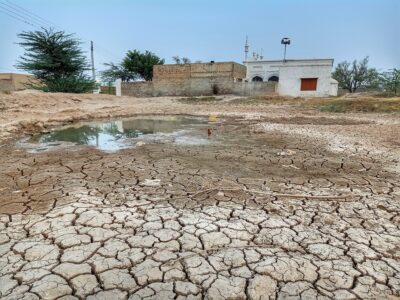 In 2008 the world faced one of its most severe food crises in recent history. Around the world riots broke out in otherwise food-secure nations — places like Egypt, Russia, Mexico, and Brazil. The world’s governments responded — a major U.N. conference was held in Geneva. What they discussed there was the fundamental issue of food security.
In 2008 the world faced one of its most severe food crises in recent history. Around the world riots broke out in otherwise food-secure nations — places like Egypt, Russia, Mexico, and Brazil. The world’s governments responded — a major U.N. conference was held in Geneva. What they discussed there was the fundamental issue of food security.
Earth’s population is burgeoning and by 2050 is expected to reach 9 billion. With climate change promising to alter our agricultural landscape (it’s happening even now) how can we possibly feed 9 billion? How can we ensure food is accessible for people as we increase our reliance on biofuels? How can we avoid the worldwide unrest that occured in 2008? How can we ensure food security, and avoid a food crisis, for the world? Perhaps most importantly, how can we ensure food security without our agricultural practices further exacerbating climate change?
 Agriculture has already contributed to climate change. Conventional agriculture — and particularly, industrial agricultural practices — are fuel- and chemical- (read: carbon) intensive. Conventional agriculture is also land-and-water-intensive, contributing to deforestation, water pollution, and massive loss of topsoils. And as developing countries continue to model their diets on the American one, the growing demand for livestock will only increase pressures on the land and forests, and reliance on fossil fuels.
Agriculture has already contributed to climate change. Conventional agriculture — and particularly, industrial agricultural practices — are fuel- and chemical- (read: carbon) intensive. Conventional agriculture is also land-and-water-intensive, contributing to deforestation, water pollution, and massive loss of topsoils. And as developing countries continue to model their diets on the American one, the growing demand for livestock will only increase pressures on the land and forests, and reliance on fossil fuels.
While agriculture has contributed to climate change, climate change will also continue shaping our agriculture. The Intergovernmental Panel on Climate Change (IPCC) summarized it succinctly when they concluded that “recent studies indicate that increased frequency of heat stress, droughts and floods negatively affect crop yields and livestock beyond the impacts of mean climate change, creating the possibility for surprises, with impacts that are larger, and occurring earlier, than predicted using changes in mean variables alone.”
Over the next few months I’ll be exploring the issue of agriculture and food security under climate change. This is such a huge issue — not just limited to local or regional scales — but effects all people, even here in Morningside Heights. It’s a question of where our food is going to come from, what kind of food we’ll be eating, and whether or not people, poor and rich alike, will have access to nutritious food that’s good for them and the planet.
 This series will cover a range of topics, but we’ll begin by looking at the effects that conventional agriculture is already having on the environment. After that, we’ll be examining the effects that climate change is going to have on agriculture in the future — everything from the depletion of aquifers to loss of crop diversity. Lastly, we’ll explore the wide range of alternatives that have been proposed to help ensure food security, equitable food systems, and ecologically-sound production and distribution systems. This ranges from everything from CSAs and Bolivian camellones, to biofuels and even the promises and dangers of GMO crops.
This series will cover a range of topics, but we’ll begin by looking at the effects that conventional agriculture is already having on the environment. After that, we’ll be examining the effects that climate change is going to have on agriculture in the future — everything from the depletion of aquifers to loss of crop diversity. Lastly, we’ll explore the wide range of alternatives that have been proposed to help ensure food security, equitable food systems, and ecologically-sound production and distribution systems. This ranges from everything from CSAs and Bolivian camellones, to biofuels and even the promises and dangers of GMO crops.




Hopefully, the world has discovered the biofuel fallacy…chopping down rain forests to develop palm oil plantations.
Unilever recently stopped buying palm oil from Indonesia’s Sinar Mas group for this very reason. Well done, Unilever. More palm oil users need to follow suit. It’s the only language these slash & burn industrialists understand.
Thanks for this great post.I am reading and commenting on your post for the first time.This post reminds me of my college days when i did a presentation on a similar subject.This is a matter of great concern..and as you’ve rightly pointed out..it’s not just limited to the local/regional scenario,it’s a concern for the whole world.Please keep me updated.Will come back for future posts from you on the subject.
It has been plausibly hypothesized that there is a direct connection between food supply and population size. Yet population size has a direct impact on per capita food supply. Any discussion of food supply management, therefore, must also be a discussion of population size management. A refusal to consider population size management would be similar to a refusal to consider brake use management when driving an automobile. I trust that future posts on this topic will actively and closely address the population size management aspect of sustainability.